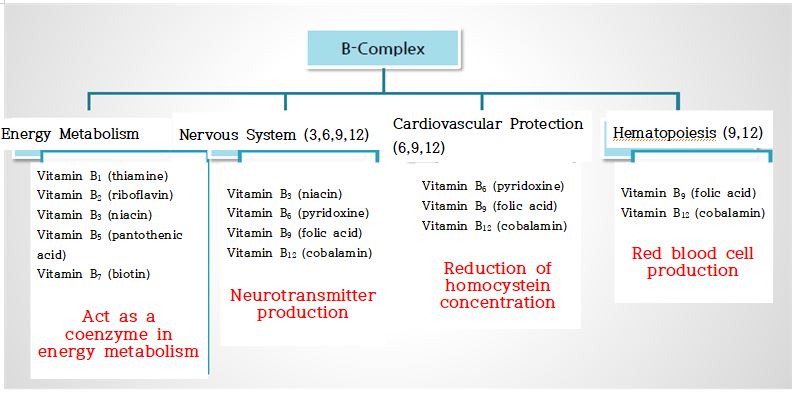
▶ Previous Artlcle: #2-1. Introduction of Energy Vitamin B-Complex
Therefore, it is easier to understand the B-complex vitamins by knowing the characteristics of each group before understanding each one.
Five of B1, B2, B3, B5, and B7 mainly act as coenzymes for energy metabolism. B3, B6, B9, and B12 act on the nervous system.
B6, B9, and B12 can prevent cardiovascular disease by reducing the concentration of homocysteine.
Finally, B9 and B12 act to promote normal red blood cell production (Figure 2).
[Advertisement] PICOCARE - Manufacturer: WONTECH(www.wtlaser.com)]
In this issue, we will summarize the five B-complex vitamins that are involved in energy metabolism: vitamin B1, B2, B3, B5, and B7.
The energy-producing vitamin B-complex is an ingredient of coenzyme we are familiar with.
That is, B1 (thiamine) is associated with TPP, B2 (riboflavin) is with FAD, B3 (niacin) is with NAD and NADP, and B5 (pantothenic acid) is with acetyl-CoA.
Vitamin B1 is called thiamine.
Since it is the only amine containing sulfur (S), it is called thio + amine = thiamine. It is mainly stored in the form of Thiamine Pyrophosphate (TPP) in the muscle, heart, liver, brain, and kidney (Figure 3).
Figure 2. Functional Classification of Vitamin B-Complex. Source: The Real Vitamin & Mineral Book, 4th Edition. Penguin, 2007.
-To be continued





















